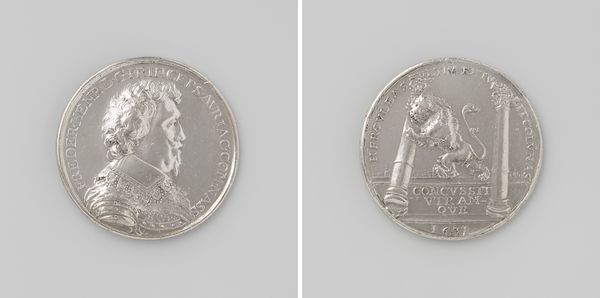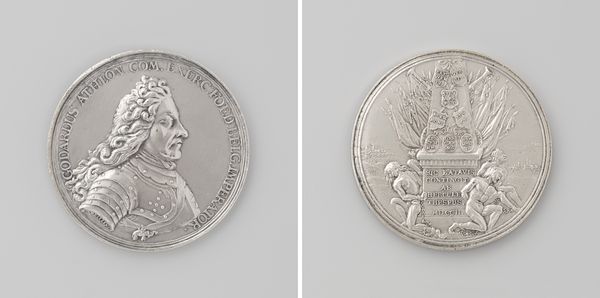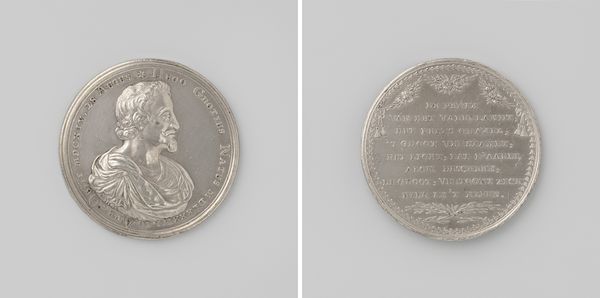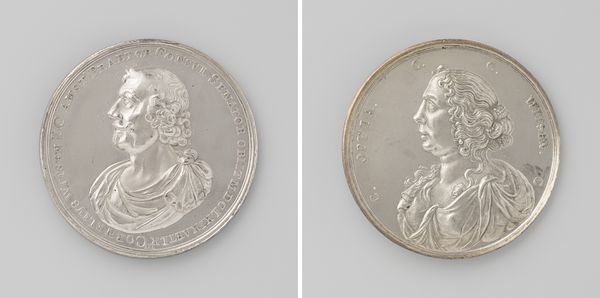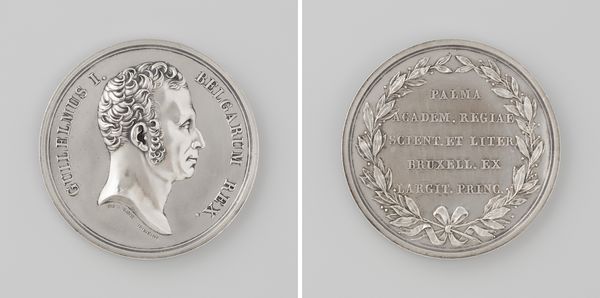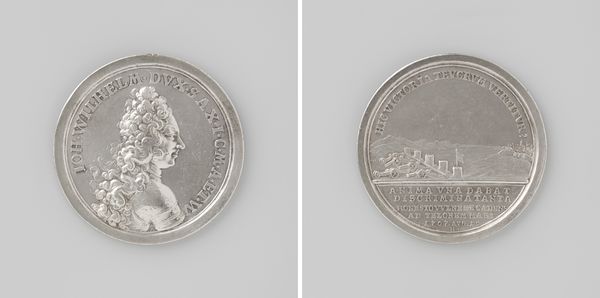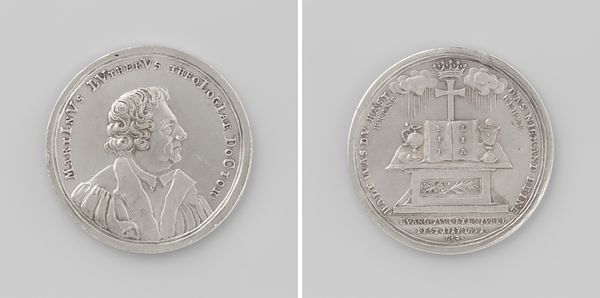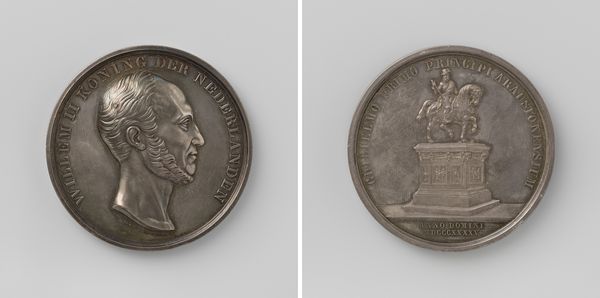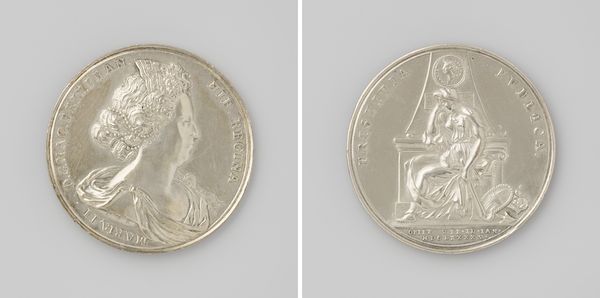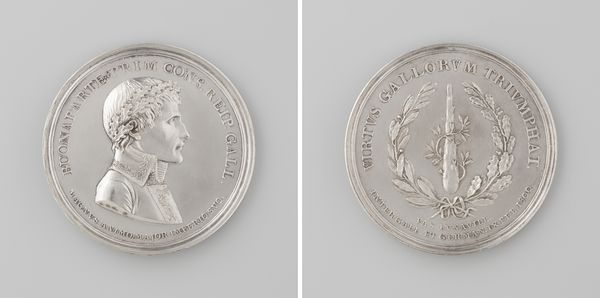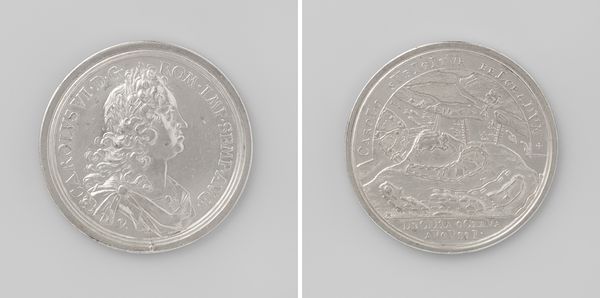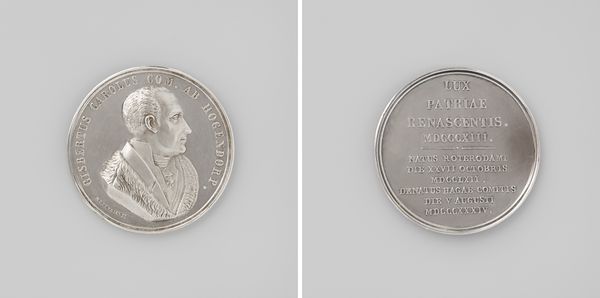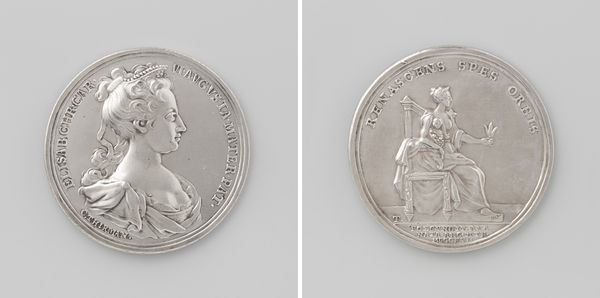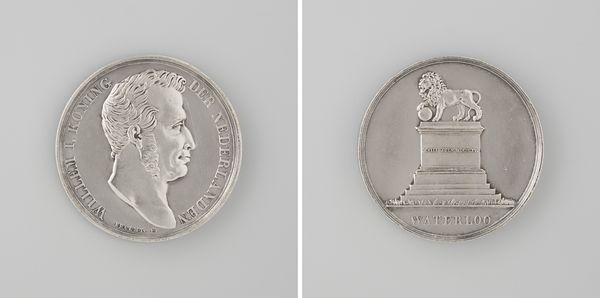
print, metal, relief, sculpture
#
portrait
#
neoclacissism
# print
#
metal
#
relief
#
sculpture
#
ceramic
#
history-painting
Dimensions: diameter 3.9 cm, weight 19.39 gr
Copyright: Rijks Museum: Open Domain
Curator: I'm struck by the cold austerity of this metal relief. Editor: Indeed. Let’s explore Gottfried Bernhard Loos’s “Tercentenary of the Reformation,” a commemorative medal cast in 1817. The coin employs a neoclassical style. Curator: The circular composition immediately focuses my attention on the carefully balanced relief portraits, divided into two sides. The precise lettering acts almost as another visual element. It is so perfectly rendered it almost hurts to look at, as if the letters could be individual incisions. Editor: Given that Loos created this piece in 1817, what does it say that the artist would choose to honor a nearly three-century-old theological conflict using the aesthetic principles of Neoclassicism? I wonder what ideological position this signals during a time of immense political upheaval following the Napoleonic wars. Is the rigid formality and medium choice—cool metal—suggestive of a need to codify and control religious belief during a moment of chaos? Curator: Interesting thought. Note, too, how Loos used very shallow relief. Look how skillfully the artist suggests form without undercutting the overall flatness of the piece. This restrained treatment of depth adds to the sense of classical balance and harmony. The two sides are legible and separated by a subtle round frame. Editor: But harmony for whom? It feels crucial to unpack how such objects historically solidify not only specific religious tenets but also power structures. Coins and medals are often circulated among an elite literate class. Given that access to the original doctrines and even vernacular translations of religious text was extremely limited at the time, objects like this arguably reinforced a particular orthodoxy. It almost presents two sides of an argument. The first the figure, the other what follows of it. Curator: Your perspective allows for a deep understanding. Viewing this, I considered the engraving's ability to encapsulate both the detail and a feeling of monumental stability. I now find myself reconsidering the metal medium choice and thinking more critically about who and how those aesthetic decisions impacted. Editor: I agree with you on its material strength. Engaging with art in such ways can bring rich social and theoretical contexts to light. It is essential for the present.
Comments
No comments
Be the first to comment and join the conversation on the ultimate creative platform.
